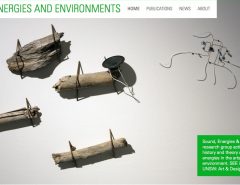HUGH DAVIES: Tapestries
Hugh Davies was one of the masters of contemporary experimental music. His tireless search for musical invention and his historical accuracy led him to explore different fields in music. This one is a selection of his lesser known electronic pieces, that he choose to represent his own approach to the matter.
Now that he’s not more with us this collection remains as an outstanding picture of his creativity in music. In the broader sense, as he was used to do.
“When I began my musical career in the mid-1960s I thought of myself as a composer with a strong interest in what was then known as electronic music, especially live electronic music. My early work with live electronics soon led me to what has become the main focus of my creative activities, inventing and performing on new, usually amplified instruments. Because I have been primarily involved in live performance I have composed comparatively little taped electronic music, even though, in addition to my small home studio, I had free access to a university studio for 25 years (modest for the first 15 years, and then well-equipped). This album contains my most substantial compositions in the medium, for prerecorded tape or CD. With the exception of the opening section of Vision, which was included on the cover CD of an issue of Avant magazine, none of these works has previously been recorded commercially.(…)
The original versions of four of these five electronic compositions had a theatrical connection. (…)
Natural Images (1976) and Tapestries (1982-83) were both commissioned by small British modern dance companies (…). Vision (1987) is an expansion of the tape sections of my dance theatre composition I Have a Dream (1984-85), and similar material is used in the only work without a theatrical link, Celeritas (1987). From Trees and Rocks (2002) has a rather different origin, having been commissioned as one of five sonic museum-guides for an exhibition in Cologne, at which individual visitors walked around the galleries wearing headphones, creating their own interactions between the selected sonic guide and the works of art on display.”
(Hugh Davies)





Leave a Reply
Lo siento, debes estar conectado para publicar un comentario.